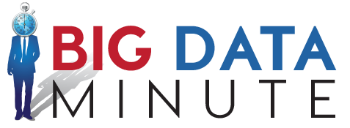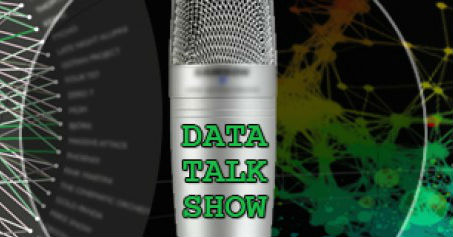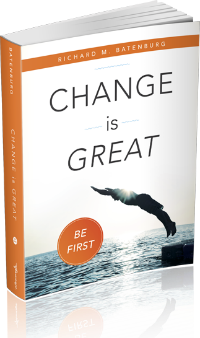
by Aleah Radovich | May 25, 2016 | Big Data
- 90% of all the world’s data has been created within the last two years.
- 25% of organizations now have a data scientist on staff.
- According to CIO, $3.2 billion was spent by companies on big data in 2010; it is predicted companies will spend $16.9 billion on big data by 2015
- $300 billion could be saved if big data was used effectively the US healthcare sector; thereby reducing expenditure by 8%
- Progressive Casualty Insurance Company, uses Big Data as part of its “pay as you drive” program, offers drivers the chance to lower their insurance premiums based on real-time analysis of their driving habits.
- 328 million things connect to the internet each Month!
- 91% of marketing leaders believe successful brands use customer data to drive business decisions.
More Facts About the Big Data Revolution

by Aleah Radovich | May 20, 2016 | Big Data, Save With Data
When we think about Big Data, we don’t typically directly associate it with money. To some extent, this is true; raw data alone is pretty much useless, and worthless. However, when it is analyzed and used properly, it can be an organization’s most valuable asset.
We all know that knowledge is power. And in the case of business, knowledge is profit. If you have enough information to determine how many staff members you need on the floor of a restaurant at all times, you can save a lot of money, and keep your customers happy. If you could identify how to store more supplies in a smaller safe, you could save real estate, and money. And if you can figure out what will keep your customers coming back time and time again, you will increase your profits.
To gain access to all this information, and to gain all this knowledge once seemed impossible. This is precisely why the terms “intuition,” and “business acumen” came about. But really these are just fancy terms for “educated guesses.” Data eliminates our need for guessing when making business decisions.
But of course, it’s not that easy. Just because a business or organization has access to data (every one does), does not mean that they can all monetize their data.
The first step to monetizing data is to consolidate that data. The term “big data” means that there is a lot of data, from many different sources. In order to understand the data and put it into context, you need to consolidate it all, to understand the whole picture.
Once it is consolidated, it needs to be properly analyzed. It is this analysis process that transforms the raw data into information.
But, you also need to make sure that this information is put in front of the right people. These people will transform the information into insight.
Then the insight can be used to make transformative business decisions.
So…monetizing Big Data isn’t exactly easy. But if you can do it, it will transform your business for the better. This is precisely why you need to hire the best data scientists you can, that truly understand the architecture of everything data. It is naive to think that you and your IT team can accomplish all of the above on your own – by the time you learned how to do it, it will have changed.

by Aleah Radovich | May 12, 2016 | Predictive Analytics, Save With Data
Collection and analysis of Big Data are crucial to business and government in order to be sustainable and competitive in industry. With the easy accessibility of Big Data, we must ask ourselves how can we use it to its full potential? What limits should be placed on its use? And how can the law enforcement community take full advantage of it and simultaneously retain public support?
Crime analytics is the applied application of analytics by analysts to support crime prevention and investigations as well as intelligence-led policing. It is a prime example of how advanced analytics are about the application of methods and tools by people not just the tools alone. It is important to remember that one does not occur without the other. Moreover, that the role of the human in the analytic process is key to making informed assessments to decision-makers.
As criminals are becoming smarter and more creative using the Web, law enforcement agencies are in need of technology that allows them to stay a step ahead. With the amount of knowledge and insight Big Data can provide, public safety officials have an obligation to protect the wider community. Law enforcement organizations and the private sector working together can enable us all to prevent future crime, reduce costs and prosecute criminals.
This is not something new as crime analytics have been in use since the mid-90s. For example, at the Seattle Police Department, each morning’s schedule begins with review of Google Maps and computer algorithms to determine where officers should focus their attention. For now, predictive policing programs are solely focused on property crimes. This has included recordings of movements of vehicles that are stored for later investigations. Unlike most police departments, Seattle requires officers to vet each citation. For the public, the police department even created a Twitter account for residents to report crime in their neighborhood.
Seattle also has bought on a new software package, PredPol, for predictive policing. It looks at short and long-term patterns in property crimes and can forecast risk. It is in use by 11 other police agencies including those of the cities of Los Angeles and Santa Cruz, California.
On the east coast, the Durham (N.C.) police department’s analytical services group used analytics technology to help reduce the amount of violent crime in a two-square-mile region of the city by more than 50 percent during a four-year span (2007-2011).
In order to be successful using these technologies requires communication to the consumer and close oversight of security and privacy policies. If the public understands their information will be handled securely and that they will benefit then they are more likely to be comfortable with sharing personal details. Trust will take time to develop and proven success in how the data are managed towards the ultimate goal of a global community and secure network.

by Aleah Radovich | May 3, 2016 | Data Science
What makes someone a data scientist? This question keeps coming up continuously, so we’ve finally decided to write a blog to make it clear.
It is difficult to come up with one, single definition, because data scientists perform a wide variety of activities and have a wide variety of skills.
Typically, a data scientist can be best utilized working alongside an engineering and product management team to help develop products, and to help provide valuable insights to the business. Some data scientists will even refer to themselves as “data detectives.”
Here are some of the values/services/skills that a data scientist can provide:
- Product Analytics: To understand how users interact with the product through analysis of the logs
- Data Engineering / Data Pipeline: To automate data collection, aggregation, and visualization to produce metrics that are actionable
- Experimentation (A/B Testing): To establish causality that is otherwise too messy or not possible through observational study
- Data Modeling: To build predictive models
However, it is important to note that each of these is an individual skill and job. A single data scientist cannot perform all of these job positions.
Here is a great podcast where a data scientist explains in her own words what a data scientist is:
Big Data Podcast – What Is A Data Scientist?










Recent Comments